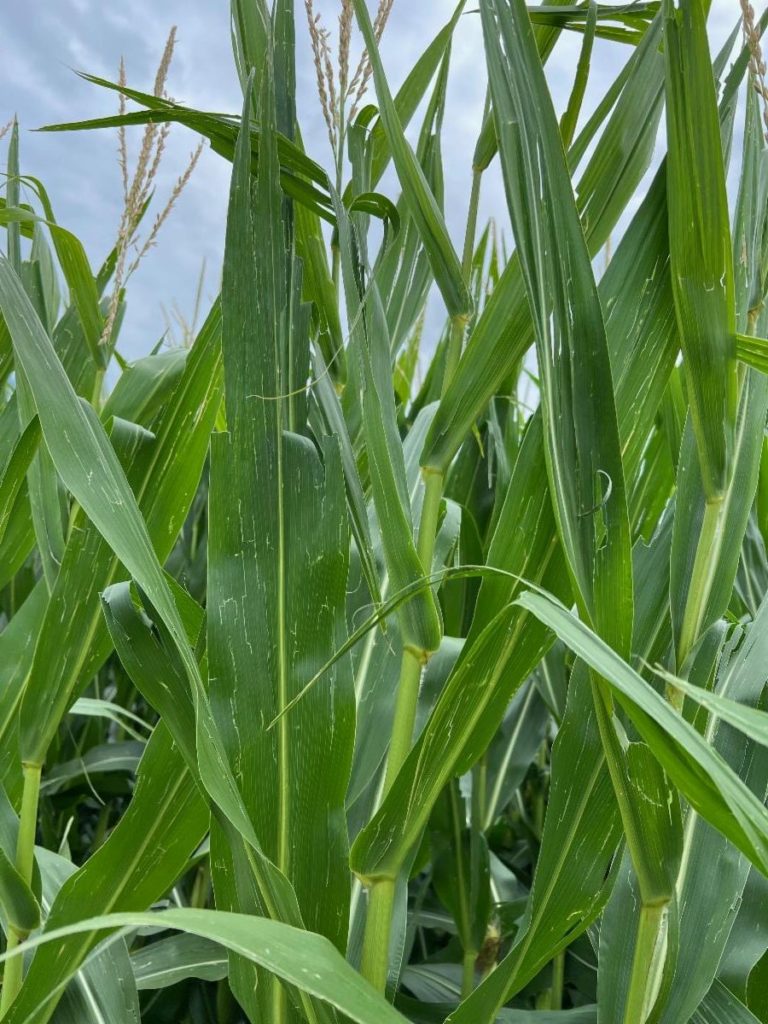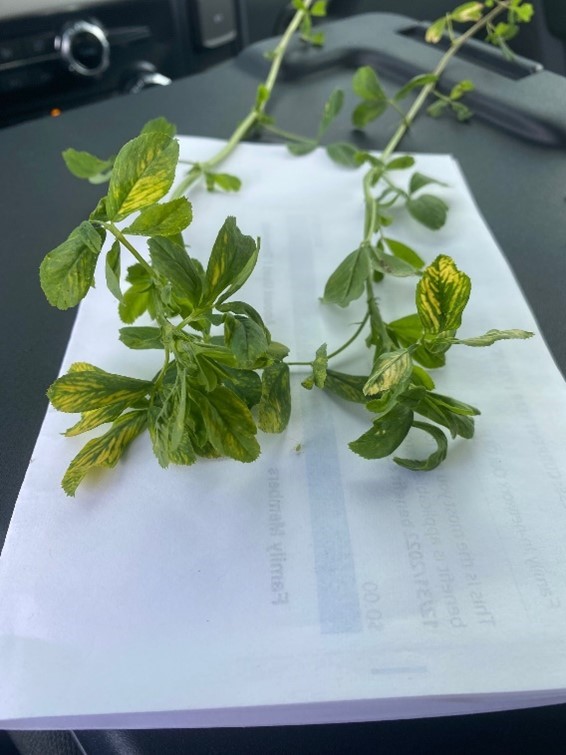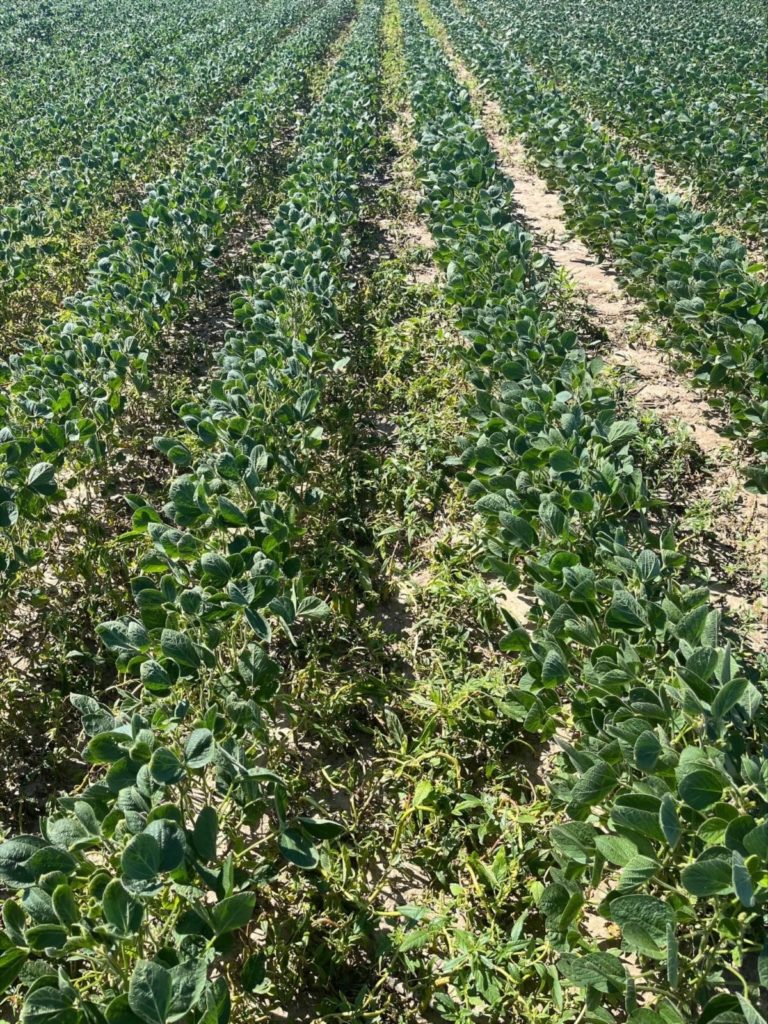
The one-stop-shop to hearing everything you need to know about what is happening in your fields this week.
This week’s featured agronomists are:
Dave Richter – Belle Plaine
Chris Soltau – Goodhue
Garrett Johnson – Morristown
Steve Yoch – Elgin
Eric Soley – Ellsworth
Scroll down to hear from your local agronomist.
WEST
Belle Plaine – Le Center – Le Sueur
 Dave Richter
Dave Richter
The Belle Plaine area was finally blessed with some much needed rain. Corn and Soybeans to the North were showing some severe drought stress.
The applicators are in full Go-Mode, soybeans are in the R2-R3 stage which is prime time for fungicide application. Fungicide will help protect and build yield in soybeans with having fewer flowers aborting.
Corn is in full tassel stage and is at the prime time for fungicide applications. Fungicide will protect and build yield in corn by creating a healthier, greener plant while allowing for more efficient use of the water available and reducing drought stress.
Hopefully the rains keep coming and we will be in for a good crop!
EAST
Pine Island – Cannon Falls – Goodhue – Lake City
 Chris Soltau
Chris Soltau
The waterhemp is on a vengeance this year. I see escapes in corn fields and a lot of bean fields. I have been thinking about what makes it different this year compared to the last two years. One conclusion I made is that the Roundup rates are lower this year than last year. I think it is not due to the lack of Roundup, but that we have less surfactant in the tank. With the Sequence sprayed this year, we have less oil in the tank compared to Dual Magnum. Sequence is water, not oil, based.
I plan on adding 1/2gal Strikelock per 100 gallons water and 1 quart of Class Act for all non Xtend acres next year in the beans. For the corn, I am going to recommend a quart of Class Act and look at different surfactants and oils that will help the Callisto portion of the corn tank mix.
Talking with co-workers and agricultural industry personnel, one big common factor between waterhemp failures and successes is a two pass system for weeds in corn and soybeans. A pre-emerge or early post keeps the density low of the waterhemp, ragweed, and annual grass. Then, we have better coverage for the second pass due to a lesser density of weeds.
This also allows for spraying shorter weeds. Waterhemp should be sprayed less than 6” tall. Most labels are 2-4” tall, but I know we will always have one out there 2” taller than the rest. I know we have killed them much taller, but the coverage issue becomes challenging with hitting all the growing points on the taller plant and the shorter ones underneath the tall plant.
The summary for waterhemp control is a two pass weed control system, good coverage, and the right products, rates, and surfactants.
CENTRAL
Morristown – Wanamingo – Kenyon
 Garrett Johnson
Garrett Johnson
Fungicide! The past week has seen a lot of tassels flying in corn fields. Both ground sprayers and aerial applicators are trying to cover as many acres as they can when weather permits. In most of the central region we were lucky and got a few shots of rain to keep the high yield potential in both corn and beans. Soybean fungicide is starting take off as many beans reach R3. There are many offerings if you are looking for added yield potential in your soybean fungicide application. Masterlock is a penetrant that helps the fungicide make it to the lower levels of the canopy. Max-In Manganese is a micronutrient that is added for its benefits to the photosynthesis process and plant health. We can also add Max-In K. Potassium is very important to a soybean crop and Max-In K can help with the breakdown of carbohydrates and the process of converting nitrite to nitrate which is plant usable

 Some recent storms that have brought much needed rains, have also brought a few scattered areas of hail. Pictured here is some hail damage from those recent storms Fungicide applications will help protect these damaged leaves from diseases and pathogens.
Some recent storms that have brought much needed rains, have also brought a few scattered areas of hail. Pictured here is some hail damage from those recent storms Fungicide applications will help protect these damaged leaves from diseases and pathogens.
SOUTH
Elgin – Lewiston – Stewartville
 Steve Yoch
Steve Yoch
Alfalfa Mosaic Virus
Alfalfa Mosaic Virus (AMV) is a common virus found in alfalfa, but usually at very low incidence. While scouting fields it can sometimes be confused with a nutrient deficiency. In a field that I was scouting earlier this month, it seemed to be very localized and was also found on clover plants in the bordering waterway. AMV can reduce the vigor of the alfalfa stand especially on older stands. The virus is transmitted by pea aphids and can overwinter in the crown from an infection the year prior. There are no known rescue treatments available once the plant has AMV. The best defense for AMV is selecting varieties with resistance and controlling the aphid populations.
 |
 |
WWAS
Ellsworth
 Eric Soley
Eric Soley
Western Wisconsin received some much-needed rain last Saturday but, unfortunately, for most of our area that rain only provided a few days of reprieve for the crops. The cooler weather this week will help but we are desperate for more rain!
If seeing drought-stressed crops wasn’t frustrating enough, watching waterhemp thrive in these conditions is another kick to the gut! A lot of acres were sprayed at an early post stage with Enlist and a group 15 herbicide but without adequate moisture to activate the residuals the next flush of waterhemp was able to emerge. As frustrating as this is we have to remember that the herbicide plan, in most cases, was correct, Mother Nature just didn’t cooperate!



